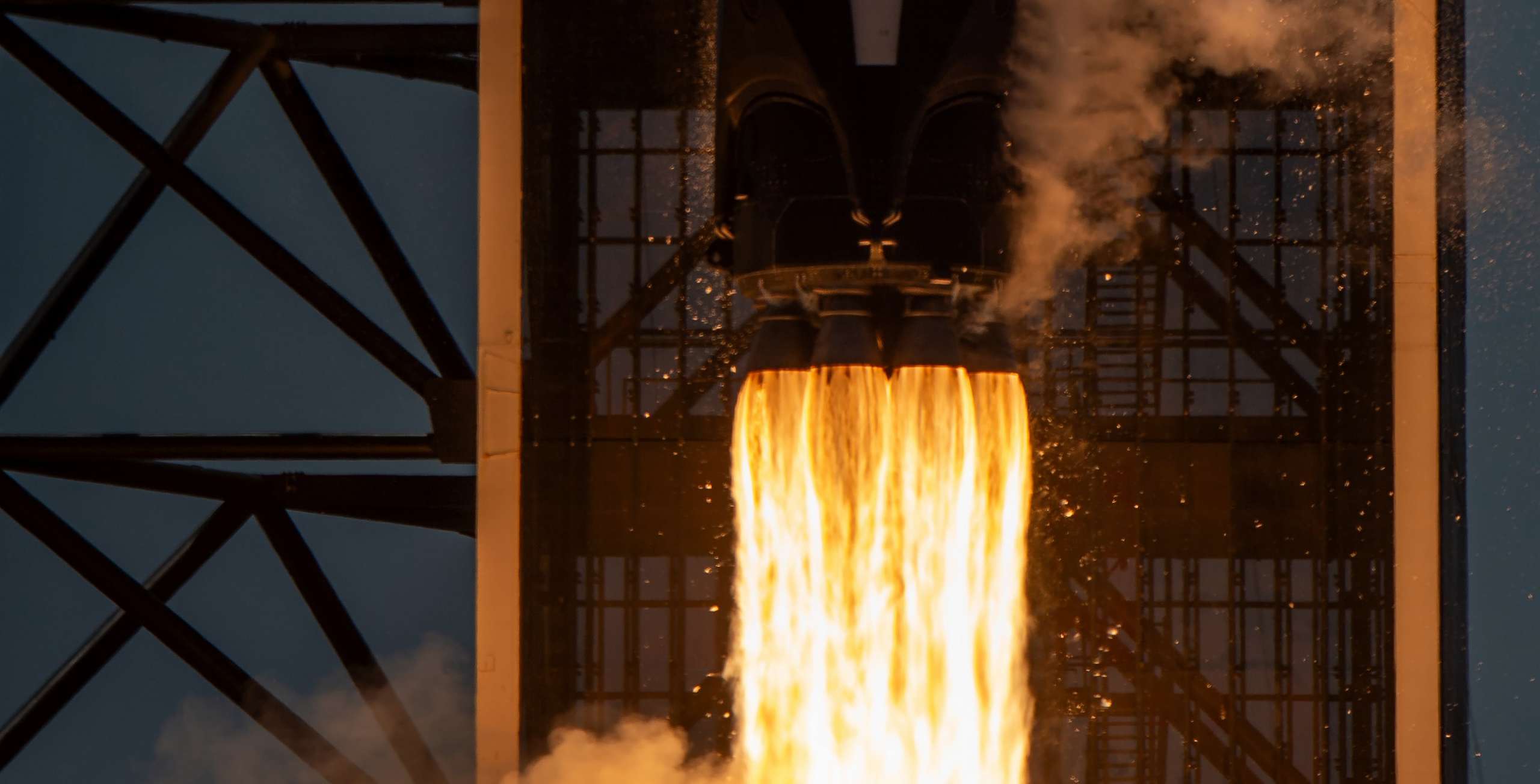

News
SpaceX to ring in Crew Dragon’s success with a Starlink launch and landing
SpaceX wants to ring in the historic success of its Crew Dragon spacecraft the only way it knows how – sending 60-satellite Starlink satellites into orbit and landing another Falcon booster as few as three days after the company’s inaugural astronaut launch.
The mission – deemed Starlink-8 – will be SpaceX’s eighth Starlink launch overall and the seventh launch of upgraded v1.0 satellites, pushing the company a mission past the halfway point towards its first internet beta test. If successful, it will raise SpaceX’s ever-growing constellation to some ~475 satellites strong, approximately 400 spacecraft shy of the ~840 COO and President Gwynne Shotwell believes are necessary to begin rolling out Starlink internet service.
Delayed from May 7th to the 17th, 18th, and 19th before SpaceX called the mission off to give Crew Dragon’s inaugural astronaut launch space to breathe, Starlink-8 is now scheduled to launch no earlier than 9:25 pm EDT on June 3rd (02:25 UTC, 4 June). Aside from taking SpaceX another step towards an operational Starlink constellation and source of income independent of launches, the launch is also on track to mark several more critical milestones both in orbit and back on (or near) the ground.
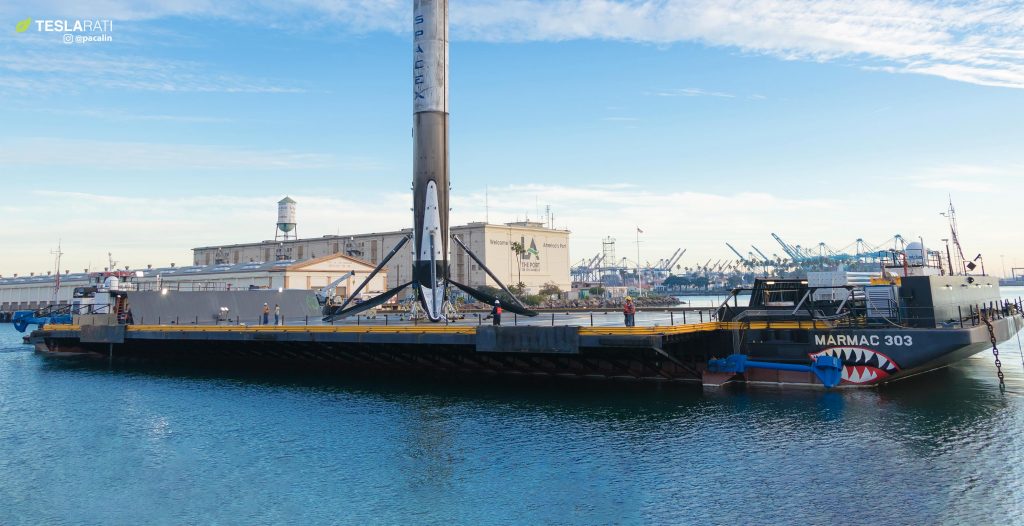
By far the most notable (and unexpected) first of Starlink-8 is related to booster recovery plans. On May 30th, the very same day SpaceX performed its first astronaut launch, drone ship Just Read The Instructions (JRTI) was spotted heading out into the Atlantic Ocean, deck cleared for the first time in the better part of a year. While initially assumed to be another one of a few sea trials the radically upgraded drone ship has performed in the last few weeks, news broke hours later that JRTI was actually heading out to sea for its first rocket recovery attempt in more than 16 months.
Replacing SpaceX’s original East Coast-based drone ship of the same name, the current iteration of Just Read The Instructions debuted in the Pacific Ocean in January 2016 with an explosively-unsuccessful booster landing after launching the Jason-3 weather satellite. The ship’s next landing attempt would come one year later and kick of seven consecutive booster landings completed over the following 24 months, followed shortly by a temporary pause of SpaceX’s West Coast launch presence.
SpaceX intends to perform its limited manifest of future Californian launches while relying entirely on return-to-launch-site (RTLS) rocket booster recoveries back onshore, freeing up drone ship JRTI to head to Florida to support the company’s far busier East Coast manifest. After transiting the Panama Canal in August 2019 and undergoing several months of refits in Louisiana, JRTI arrived in Florida in December 2019 and has been gradually upgraded at Port Canaveral over the last few months. Now, outfitted with a new Octagrabber robot and thrusters and power supplies that dwarf those on SpaceX’s other drone ship, SpaceX has apparently given JRTI the go-ahead to attempt its first booster recovery in almost a year and a half.
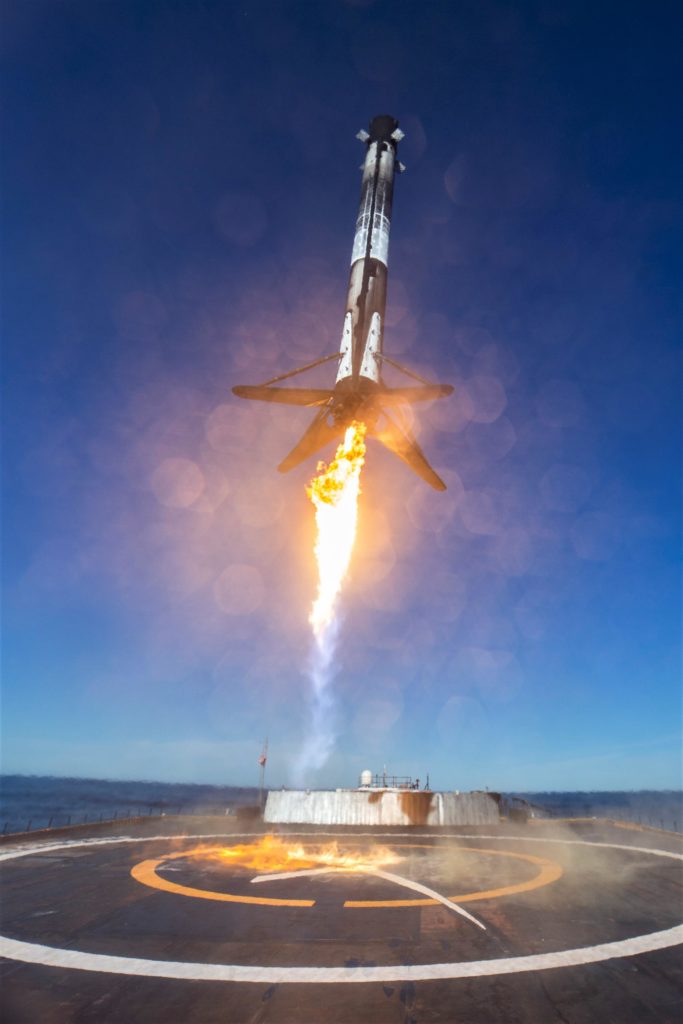
Visors, reuse, rideshares and more
Additionally, Starlink-8 is scheduled to debut SpaceX’s first “VisorSat”, a Starlink satellite modified with a visor specifically designed to prevent sunlight from reflecting off of the shiny satellites and disrupting ground-based astronomy. If successful, all future Starlink satellites SpaceX manufactures will include the modification, hopefully mitigating or wholly eliminating Starlink’s impact on astronomy.
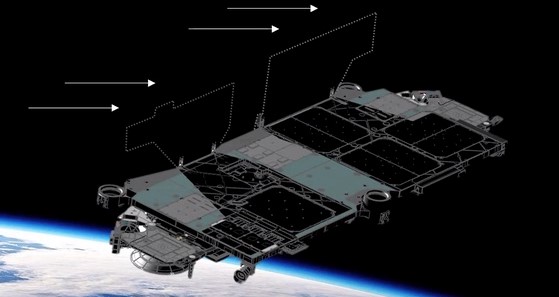
Starlink-8 is also expected to debut SpaceX’s potentially game-changing addition of rideshare slots for small satellites aboard a large portion of the company’s planned Starlink launches. Earth imaging company Planet is the first announced customer, with three ~125 kg (~300 lb) SkySat imaging satellites manifested on Starlink-8. Potentially costing Planet just $1 million apiece, the launch option could easily become industry-leading if SpaceX can regularly include several hundred kilograms of 3rd-party satellites on each of the 20+ Starlink missions it’s likely to launch annually.
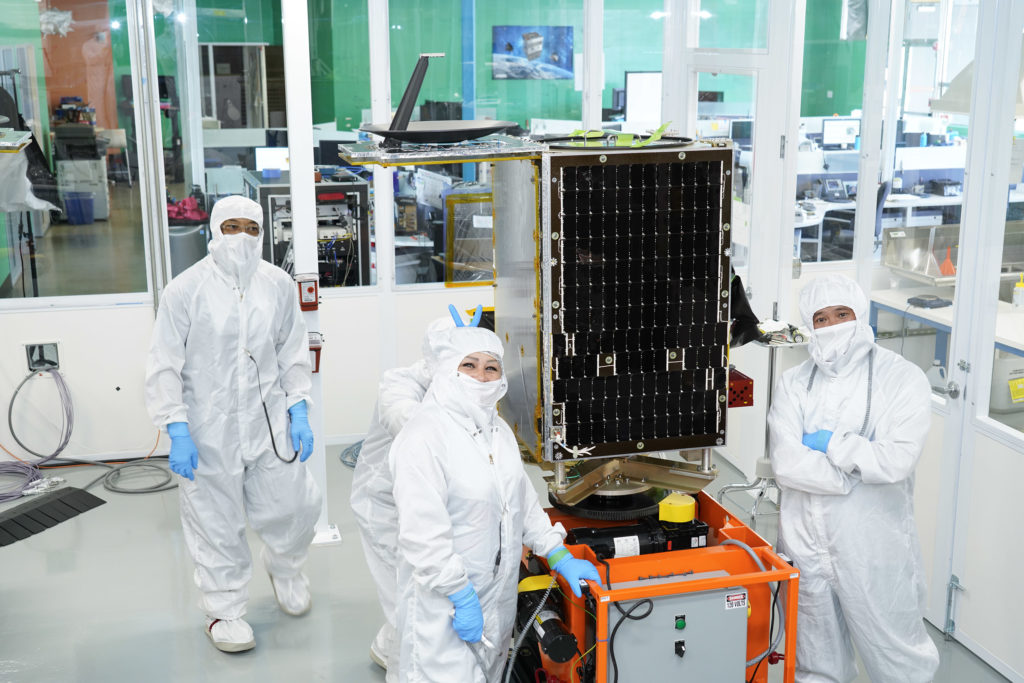
Finally, Next Spaceflight says that Falcon 9 booster B1049 has been assigned to support Starlink-8, meaning that the mission will be the second time ever that a Falcon 9 booster has attempted its fifth orbital-class launch. Starlink-8 will come two and a half months after improper refurbishment caused Falcon 9 booster B1048 to suffer an in-flight engine failure during its fifth launch. While the booster changed its flight program on the fly to ensure the Starlink-6 mission was successfully completed, B1048 did so at the cost of its landing propellant, ending the booster’s productive life with a violent crash somewhere on the surface of the Atlantic Ocean.
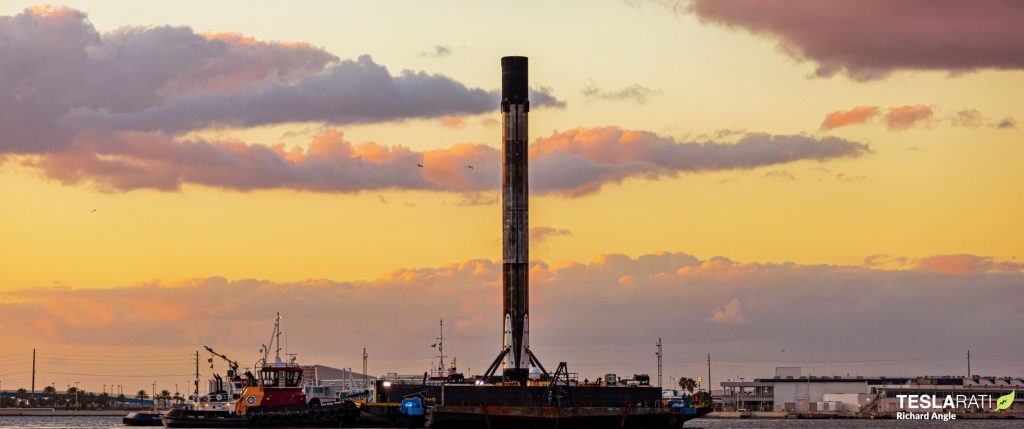
If B1049 can successfully launch and land for the fifth time on June 3rd, it will become the pack leader of SpaceX’s fleet of reusable rockets. With a safe landing, B1049 can prepare to become the first booster to launch six times, hopefully proving that Falcon 9 can safely fly six, seven, eight, or more times – perhaps one day cresting 10 launches to achieve Falcon 9 Block 5’s design goal.
Check out Teslarati’s Marketplace! We offer Tesla accessories, including for the Tesla Cybertruck and Tesla Model 3.
Elon Musk
Elon Musk confirms Grok 4 launch on July 9 with livestream event
The rollout will be accompanied by a livestream at 8 p.m. Pacific Time.

Elon Musk has officially confirmed that Grok 4, the latest version of xAI’s large language model, will launch on July 9. The rollout will be accompanied by a livestream at 8 p.m. Pacific Time, hosted on xAI’s official account on X.
xAI goes straight to Grok 4
Back in May, leaks indicated that xAI was getting ready to ship Grok 3.5. Considering Musk’s recent comments, however, it appears that the artificial intelligence startup would be focusing on the large language model’s fourth iteration instead. As noted in a Financial Express report, users on X have sighted references to Grok 4 in the lead up to the update’s launch, such as “grok-4-prod-mimic” and “Grok 4 Code.”
Musk’s Grok 4 announcement comes as AI competition intensifies between major players including OpenAI, Google, and xAI. With Musk’s Colossus supercomputer fully operational in Memphis, xAI appears to be accelerating its AI product roadmap.
Musk pushes Grok toward political neutrality
Grok 4’s launch also follows a recent controversy involving political bias, as noted in a CNN report. Last week, Grok responded to a user on X stating that political violence in the U.S. since 2016 had come more from the political right than the left. The chatbot noted in a later reply that its answer was based on information from sources like Reuters, the Journal of Democracy, and University of Maryland studies.
Musk stated that Grok’s response was a “major fail.” “Major fail, as this is objectively false. Grok is parroting legacy media. Working on it,” he wrote in a post on X. By the end of June, Musk noted that he was “grinding all night with the xAI team” and that they were making “good progress.” He also stated that the model “Will be called Grok 4. Release just after July 4th. Needs one more big run for a specialized coding model.”
News
Tesla opens massive solar Supercharger station in California
The Supercharger opened to customers ahead of Fourth of July weekend, while Tesla continues phase two of construction on the site.

Tesla has officially launched the first several Supercharging posts at a massive station in California, notably including solar canopies and grid-scale batteries to offer completely renewable charging.
Last week, Tesla announced on X that it opened the first 84 Supercharger stalls of a planned 168-stall station in Lost Hills, California. Additionally, the massive Supercharger project features 11MW of solar canopies and 10 Megapack batteries for off-grid charging powered entirely by solar energy.
Tesla completed the first phase of the project just days ahead of the busy Fourth of July holiday weekend, adding that initial construction took just eight months. In addition to the remaining charging stalls, Tesla says it’s building a set of lounge areas, renderings of which can be seen below alongside current photos of the site.
Notably, the site also includes V4 charging posts for the company’s latest available charging speeds, and it’s located near the busy junction between I-5 and Highway 46 in Kern County.
“Thank you [Kern County] and [PG&E] for collaboration and approvals,” Tesla wrote in a follow-up post.

Credit: Tesla Charging | X

Credit: Tesla Charging | X

Credit: Tesla Charging | X

Credit: Tesla Charging | X
Tesla Supercharger Maps for North America, Europe, and Asia pic.twitter.com/0U5r0XRPyo
— TESLARATI (@Teslarati) July 2, 2025
READ MORE ON TESLA SUPERCHARGERS: Tesla launches ultra-fast V4 Superchargers in China for the first time
Testing at the LA Diner, plus Musk update on potential Tesla solar Gigafactory
The huge Tesla Supercharger station completed phase one of construction fairly quickly, especially given how long Tesla has been working on its unique Los Angeles diner, drive-in, and Supercharger location. Still, the company was seen performing some testing at the nearly-completed charging station earlier this month, and will reportedly be holding a job fair.
Elon Musk also responded on Monday morning to a post on X, suggesting that Tesla is “thinking about” building a U.S.-based solar Gigafactory in order to help support increased power needs with AI growth, and to bolster domestic solar production.
Tesla is building a new UFO-inspired Supercharger in the heart of Alien country
News
Tesla driver walks away from major accident with minor injuries
The driver sustained only minor injuries, and the exact cause of the crash remains under investigation.

The driver of a Tesla Model Y survived and walked away from a harrowing accident on Monday in California, only sustaining minor injuries despite the vehicle being impaled by a guardrail.
On Monday morning around 4:34 a.m., the Los Banos division of the California Highway Patrol (CHP) responded to the accident on I-5 near Panoche Road, involving a 23-year-old in a Tesla Model Y. According to a post on social media, the driver veered off the road for unknown reasons in the northbound lane, before crashing directly into the guardrail and impaling the vehicle.
You can read the full message and photos from Los Banos CHP below, as were shared in a Facebook post on Monday afternoon.
This morning a Tesla model y was traveling in the #1 northbound lane of I-5 north of Panoche Rd. For unknown reasons driver allowed V-1 to veer off the roadway, travel through a dirt center divide, and crashed into the fixed metal guardrail. Lucky for the driver he only sustained minor injuries and was able to walk away. Driving a vehicle requires 100% attention to the road. Avoid distractions and focus on driving.

Credit: CHP Los Banos (via Facebook)

Credit: CHP Los Banos (via Facebook)

Credit: CHP Los Banos (via Facebook)
In a statement to SFGate, CHP officer Myles Anderson said that the driver only sustained minor injuries, while no arrests are made and drugs and alcohol are not suspected to have been involved. The report also notes that Tesla’s “cruise control and lane assistance features” were activated, according to Anderson. However, it’s not entirely clear if this is referring to Supervised Full Self-Driving (FSD), or to the cruise control and lane assist features baked into Autopilot.
At the time of writing, CHP has not yet responded to Teslarati’s request for clarification and additional details on the matter.
Tesla Crash Safety Ratings across its lineup: pic.twitter.com/ny30R7ceji
— TESLARATI (@Teslarati) July 1, 2025
READ MORE ON TESLA SAFETY: Tesla rolls out crucial new safety feature aimed at saving children
The news comes after Tesla has touted its vehicles as incredibly safe for many years. In December, for example, the company highlighted receiving top safety scores from regulators on four different continents throughout the world, including from the National Highway Traffic Safety Administration (NHTSA) and the Insurance Institute of Highway Safety (IIHS) in the U.S.
Tesla has also listed the goal of making its vehicles the safest on the road throughout the years, both in the overall design of its vehicles and in its Autopilot and Full Self-Driving (FSD) programs.
Tesla Model 3 ranks as the safest new car in Europe for 2025, per Euro NCAP tests
-

 Elon Musk1 week ago
Elon Musk1 week agoTesla investors will be shocked by Jim Cramer’s latest assessment
-

 News2 weeks ago
News2 weeks agoTesla Robotaxi’s biggest challenge seems to be this one thing
-

 News2 weeks ago
News2 weeks agoWatch the first true Tesla Robotaxi intervention by safety monitor
-

 Elon Musk2 weeks ago
Elon Musk2 weeks agoA Tesla just delivered itself to a customer autonomously, Elon Musk confirms
-

 News2 weeks ago
News2 weeks agoTesla Robotaxi rollout proves that Elon Musk still delivers, even if it’s late
-

 Elon Musk2 weeks ago
Elon Musk2 weeks agoxAI welcomes Memphis pollution results, environmental groups push back
-

 Elon Musk2 weeks ago
Elon Musk2 weeks agoElon Musk commends Tesla team on successful Robotaxi launch
-

 Elon Musk2 weeks ago
Elon Musk2 weeks agoElon Musk confirms Tesla Optimus V3 already uses Grok voice AI


















